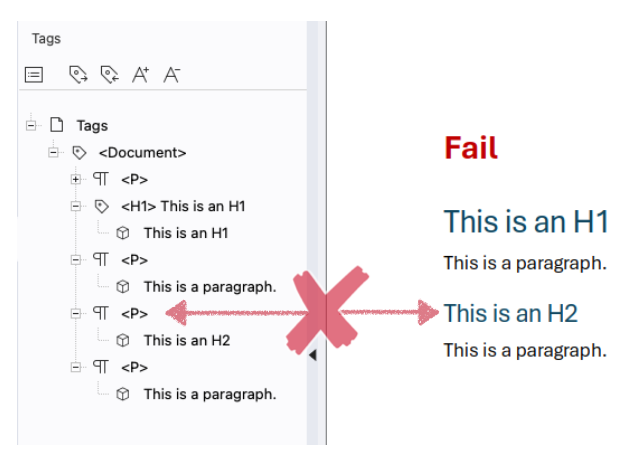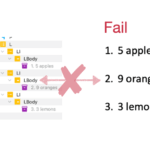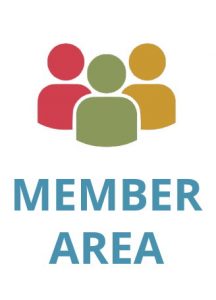Techniques for Accessible PDF: Headings
April 22, 2025

Techniques for Accessible PDF: Headings

April 22, 2025

About PDF Association staff
The PDF Association is pleased to announce its second release of Techniques for Accessible PDF by the PDF Accessibility Liaison Working Group. Following the January 2025 announcement of the original set of fundamental techniques, the 2025-Q2 release focuses on headings, with nine new pass techniques and eight new failure examples, expanding significantly on the existing guidance.
Headings are vital in organizing document content, especially with longer or complex documents. For assistive technology, the correct use of headings allows what would otherwise be an undifferentiated stream of text to become a navigable document in which readers can quickly find the content they want to read, and skip the content they don’t want to read.
The new Techniques for headings provide essential examples of correct and incorrect use of these document-structuring tags in the PDF context.
Getting headings right in PDF is especially important, as PDF files can be very long documents, possibly including deeply nested headings. PDF files can also contain multiple documents and / or subsections of other documents. Accordingly, techniques for headings in PDF files differ from techniques that are applicable to other technologies such as HTML.
This vendor-neutral information, combined with precise, fully-functional example files, provides a basis for precise, authoritative test results while ensuring software developers retain maximum flexibility and potential for innovation. The objective is to help software developers, document authors and remediators to arrive at a common understanding of how to meet the needs of users who rely on assistive technology in order to read.
The following techniques provide formal examples representing the correct expression of headings in accessible PDF files:
- PDF118 H_01 First-level heading correctly tagged as H1
- PDF119 H_02 Multiline heading correctly tagged
- PDF120 H_03 Headings with different levels correctly tagged
- PDF121 H_04 Image used as heading correctly tagged
- PDF122 H_05 Heading levels correctly not skipped
- PDF123 H_06 Subtitle correctly tagged
- PDF124 H_07 Title in page content correctly tagged
- PDF125 H_08 Heading level 7 correctly role mapped to P
- PDF126 H_09 Heading level 7 correctly role mapped to H6
The following examples indicate specific failures in the representation of headings in the PDF context:
- PDF-F23 H_F01 First-level heading incorrectly tagged as P instead of H1
- PDF-F24 H_F02 Multiline heading incorrectly tagged
- PDF-F25 H_F03 Paragraph incorrectly tagged as H2
- PDF-F26 H_F04 Incorrect use of headings instead of table header cells
- PDF-F28 H_F06 Incorrect combined use of Hn and H tags for headings
- PDF-F29 H_F07 Both title and top level headings incorrectly tagged as H1
- PDF-F30 H_F08 Heading level incorrectly skipped
About the PDF Association’s Techniques
These techniques are entirely vendor-neutral. Each Technique includes a fully functional PDF file demonstrating a correct or incorrect approach to the case. They are designed to focus attention on the file rather than the producing application.
This approach enables all users – authors, remediators, auditors, and software developers – to arrive at a common understanding.
Comments about these Techniques are welcome! Please submit them via the LWG’s GitHub repository.
Additional Techniques
Many additional techniques specific to individual use cases (e.g., tables and lists) are in development. The LWG plans to maintain a quarterly release cycle going forward.
About the PDF Accessibility LWG
Led by co-chairs Markus Erle, (axes4), Birgit Peböck (Barrierefrei PDF OG) and Zak Kinsey (TargetStream Technologies), the PDF Accessibility Liaison Working Group (LWG) was originally formed to continue the work started at the PDF Techniques Accessibility Summit in December 2018; producing industry-supported example PDF files demonstrating techniques for achieving accessible PDF.
Press inquiries: Contact Duff Johnson at duff.johnson@pdfa.org




